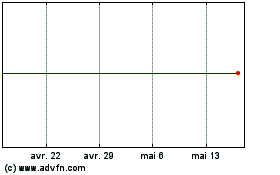Elon Musk posted a message on Sunday to Twitter saying Tesla
Motors Inc. and SolarCity Corp., both of which he leads, had no
need to tap the equity or debt markets.
Two days earlier, Tesla had said it would raise money before the
end of the year.
Tesla is ramping up to manufacture its Model 3 sedan at
substantial potential expense. The city of Fremont, Calif., where
Tesla maintains a manufacturing plant, last week released a
proposal to adjust zoning for the facility, allowing it to double
in size and boost its production capacity by an order of
magnitude.
At the same time, the car maker has initiated a merger with
SolarCity, another move likely to consume substantial quantities of
cash. SolarCity in August reported widening quarterly losses and
sharply rising operating expenses.
Mr. Musk, who is chairman of both companies, said on Twitter he
wanted "to correct expectations" about the companies' need to raise
money. He said Tesla, where he is chief executive, would reveal a
new product on Oct. 17 and reiterated a Tesla-SolarCity product
would be shown on Oct. 28.
Both announcements fit into Mr. Musk's broader effort to make
the case for merging Tesla and SolarCity ahead of shareholder votes
on the proposal.
Tesla on Friday had updated its filings for the merger with the
U.S. Securities and Exchange Commission, restating its plan to seek
additional cash by the end of the year.
"While Tesla expects that its current sources of liquidity…will
provide it with adequate liquidity based on its current plans
through at least the end of the current fiscal year, Tesla is
currently planning to raise additional funds by the end of this
year, including through potential equity or debt offerings," the
auto maker said in the filing.
Mr. Musk wrote in a tweet that he aimed "to correct expectations
that Tesla/SolarCity will need to raise equity or corp debt in Q4.
Won't be necessary for either." In another tweet, he added that the
companies "probably" wouldn't need to do so in the first quarter of
2017 either.
Tesla declined a request for further comment.
The move to merge Tesla and SolarCity comes as Mr. Musk is
preparing to transform Tesla for the mass market after establishing
the company as a maker of high-end electric cars for wealthy
customers. Tesla's long-term product strategy includes an electric
pickup truck, small sport-utility vehicle and large commercial
vehicles.
The expected arrival of Tesla's $35,000 Model 3 sedan next year
could be a turning point. Strong early demand for the Model 3 led
the company to move its goal of making 500,000 vehicles a year to
2018 from 2020.
Mr. Musk aims to churn out a million cars a year by the end of
2020. "Tesla is going to be hellbent on becoming the best
manufacturer on earth," Mr. Musk said in May, when he announced the
new target.
He built about 50,000 vehicles last year at Tesla's Fremont
factory. That factory could nearly double in size and the
facility's production rise to 500,000 vehicles annually, according
to a long-term zoning proposal released by the local government
last week.
"We are pleased to work with the City of Fremont on a plan that
reaffirms our commitment to California and to eventually maximize
the potential of our Fremont factory site," Tesla said in a
statement. "California continues to be the epicenter of Tesla's
manufacturing capabilities and we are proud to be the state's
largest manufacturing employer."
Tesla hasn't announced a plan or timeline for expanding the
Fremont plant. The proposal to the city, however, suggests Tesla is
moving to boost production capacity.
In May, Mr. Musk said production at the Fremont plant could
increase to one million vehicles a year. "Whether that's actually
wise is a separate question," he told analysts at the time. "For
our future product lineup, we're going to need more than one plant
in North America just to satisfy North America demand."
He has also said building cars in Fremont alone wouldn't be
efficient as the company expands globally, and suggested he would
consider opening factories in Europe and China.
The Fremont facility held a special place in automotive history
before coming under Tesla's ownership. It was built by then-General
Motors Corp., its first vehicle rolling off the assembly line in
the 1960s. By the 1980s, however, GM was struggling to compete with
Asian imports and partnered with Toyota Motor Corp. to run the
factory as a joint venture called New United Motor Manufacturing
Inc., or NUMMI. The goal was twofold: GM wanted to learn Toyota's
way of production while Toyota wanted experience building in the
U.S. The plant closed with GM's bankruptcy in 2009 and Toyota's
decision to stop production there the following year. Tesla
acquired it a few months later.
Under Tesla's zoning proposal, which would guide development of
the property for the next decade or more, the complex's size could
increase by about 4.6 million square feet, from 4.5 million square
feet, the city said. The expansion could increase production to
500,000 vehicles a year from 50,580 last year and increase the
number of employees to 9,315 from 6,210, according to city
records.
Tesla has purchased an additional 25 acres next to the property,
according to the company.
The Fremont Planning Commission is expected to review the plan
on Thursday. The city's staff has recommended that the city council
ultimately approve it. The San Francisco Chronicle reported the
proposal's details on Friday.
Write to Tim Higgins at tim.higgins@wsj.com
(END) Dow Jones Newswires
October 09, 2016 21:35 ET (01:35 GMT)
Copyright (c) 2016 Dow Jones & Company, Inc.
Twitter (NYSE:TWTR)
Graphique Historique de l'Action
De Juin 2024 à Juil 2024

Twitter (NYSE:TWTR)
Graphique Historique de l'Action
De Juil 2023 à Juil 2024
